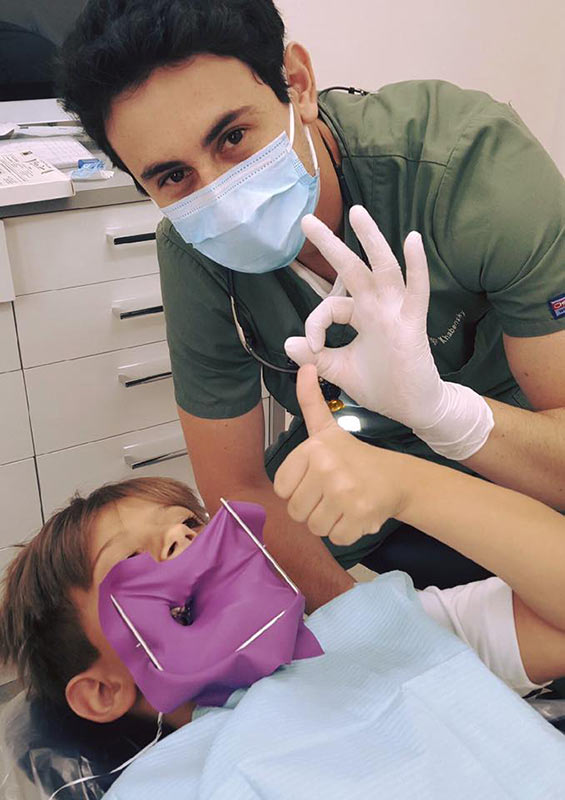Explore the Series Of Dental Issues Dentists Frequently Deal With
From the common trouble of cavities created by bacterial activity to the more dangerous development of gum disease, dental experts must be adept at early detection and intervention. Tooth sensitivity, frequently resulting from worn enamel, includes one more layer of intricacy, while the very early identification of dental cancer cells can be life-saving.
Tooth Cavities and Dental Cavity
Cavities, additionally understood as dental caries, are caused by the demineralization of tooth enamel due to acid-producing microorganisms in the mouth. If left without treatment, tooth cavities can lead to significant dental problems, including infections and tooth loss.
To diagnose cavities and tooth degeneration, dental professionals utilize a combination of visual examinations, oral X-rays, and occasionally laser fluorescence gadgets. Therapy options differ relying on the extent of the degeneration. Early-stage cavities might be managed with fluoride treatments that assist remineralize the enamel. For more innovative degeneration, a dental practitioner might require to get rid of the compromised tissue and recover the tooth with dental fillings made from materials such as composite resin, amalgam, or porcelain.
Preventative measures are critical in combating tooth cavities and dental caries. Routine dental examinations, correct cleaning and flossing methods, and a well balanced diet regimen low in sweet foods and drinks are fundamental methods that sustain oral wellness and minimize the danger of cavities.
Gum Tissue Condition

Periodontitis occurs when plaque, a sticky movie of microorganisms, sets right into tartar and collects below the gum line. This causes the gum tissues to draw away from the teeth, producing pockets that end up being infected. As the body's body immune system deals with the germs, the bone and connective tissue that hold teeth in place are damaged down. The threat elements for gum condition include poor oral hygiene, smoking cigarettes, diabetic issues, and genetic proneness.
Dentists diagnose gum tissue disease through professional assessment and periodontal penetrating to measure pocket midsts around the teeth. Treatment might include scaling and root planing to get rid of tartar and bacteria from tooth surface areas and below the gums. In severe cases, medical treatments like flap surgical procedure or bone grafts are essential to recover oral wellness. Preserving appropriate oral health and regular oral exams are essential for protecting against periodontal disease.

Tooth Sensitivity
Beyond gum tissue condition, an additional usual oral problem that individuals frequently come across is tooth level of sensitivity. Defined by a sharp, transient pain in response to stimuli such as warm, cool, sweet, or acidic foods and beverages, tooth sensitivity can significantly influence a person's high quality of life.
Additionally, dental procedures, split teeth, and gum condition can subject the dentin. article To minimize tooth sensitivity, dentists may suggest using tooth paste formulated for delicate teeth, fluoride therapies to reinforce enamel, or oral bonding to cover subjected dentin.
Ultimately, dealing with tooth level of sensitivity needs a thorough method that consists of both precautionary procedures and targeted treatments to relieve discomfort and secure the dental structures.
Dental Cancer
Oral cancer cells, a potentially dangerous and significant condition, usually flies under the radar in routine oral care discussions. This type of cancer can affect any type of component of the oral tooth cavity, consisting of the lips, tongue, cheeks, flooring of the mouth, hard and soft tastes, sinuses, click to read and throat. Early detection is important for effective therapy, yet many cases are diagnosed at advanced stages due to subtle first signs and symptoms.
Misaligned Bites
Misaligned attacks, additionally referred to as malocclusions, are an usual oral issue that can significantly affect both dental health and wellness and overall lifestyle - dentists eugene. These problems take place when the top and reduced teeth do not align appropriately, bring about difficulties in biting, eating, and also talking. Malocclusions can be classified into different kinds, consisting of overbites, underbites, crossbites, and open attacks, each presenting special obstacles that call for tailored treatment approaches
The reasons for misaligned attacks are diverse and can consist of genetic aspects, very early loss of primary teeth, thumb sucking, and injuries to the jaw. Symptoms typically consist of pain or pain in the jaw, regular biting of the inner cheeks, and a boosted danger of dental cavity and gum tissue disease due to problem in preserving dental health.
Orthodontists and dentists employ a range of interventions to address misaligned bites, from clear aligners and standard braces to advanced procedures in severe cases. Early medical diagnosis and therapy are critical to prevent complications such as temporomandibular joint (TMJ) disorders and uncommon endure teeth. Via detailed examination and individualized treatment plans, dental specialists play an essential role in dealing with malocclusions and boosting individuals' dental function and aesthetics.
Conclusion
Tooth cavities and tooth decay result from microbial activity that endangers tooth enamel, while gum condition can intensify from gingivitis to extreme gum problems. Tooth sensitivity entails discomfort from thermal stimulations, requiring specific care.
To diagnose dental caries and tooth degeneration, dentists utilize a combination Source of visual exams, oral X-rays, and sometimes laser fluorescence gadgets.Beyond gum tissue condition, another typical oral issue that individuals regularly experience is tooth level of sensitivity. Additionally, dental treatments, cracked teeth, and periodontal condition can expose the dentin. To reduce tooth level of sensitivity, dentists may advise making use of tooth paste developed for delicate teeth, fluoride treatments to strengthen enamel, or oral bonding to cover revealed dentin. Tooth cavities and tooth decay result from microbial activity that jeopardizes tooth enamel, while gum tissue disease can intensify from gingivitis to extreme gum problems.